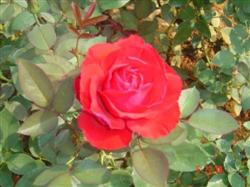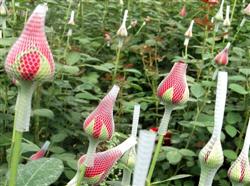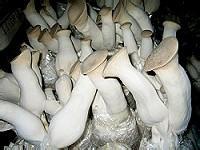Key points of Management of Datian Rose after Flood

After the beginning of July every year, different degrees of flooding will occur in different parts of the country at different times. From July 7 to 8, torrential rain in Kunming, Yunnan caused nearly 10,000 mu of rose seedlings along the Dianchi Lake and low-lying hills to be soaked in flood for more than 24 hours, resulting in a direct economic loss of more than 80 million yuan. For this reason, I only use my superficial knowledge of summer management of cut rose flowers to discuss with the majority of flower producers the production management of cut rose flowers after the flood. First, the climatic characteristics after the flood. The temperature in the shed is higher, and the temperature difference between day and night is large. In central Yunnan, after the flood, if the plastic greenhouse with a shoulder height of 2m and a top height of 3.50m, the temperature in the greenhouse is between 28 and 42 degrees Celsius at sunny noon; if it is in the plastic greenhouse with shoulder height of 1.50m and top height of 2.50m, the temperature is between 35 and 48 degrees Celsius. At night, the above specifications of the greenhouse, its internal temperature is only between 15 degrees Celsius to 17 degrees Celsius. two。 The air humidity in the shed is relatively high. In the plastic greenhouse after the disaster, the relative humidity is 60% to 70% during the sunny day and more than 80% to 90% at night. Second, rose seedlings after the flood 1. Mud covers the branches and leaves. two。 Young shoots, wilting or rotting in sunny days, mature or old branches deciduous. 3. The petals rotted and the rotten buds doubled. Third, rose field management after the flood. Discharge the stagnant water in the field as soon as possible, loosen the topsoil in time, and discharge the toxic gas produced by planting roots under the condition of anaerobic respiration, so as to reduce the damage of planting roots and restore the normal absorption capacity of roots. two。 Remove the damaged flowers and leaves in time. After the flood, which pressure damage, soaking, broken flowers and leaves should be sorted out in time, and then sprayed with a wide range of fungicides, such as carbendazim, chlorothalonil, metalaxyl and so on. 3. rinse the sludge on the branches and leaves in time to restore the photosynthetic capacity of the branches and leaves. Spray Guangpu fungicide chlorothalonil, carbendazim, metalaxyl, etc., to protect the affected branches and leaves from falling leaves or less. 4. Shading and ventilation to reduce the physiological harm to petals caused by high temperature and humidity during the day. Cover the roof with 30% to 50% sunshade net, open or roll up the side film of the greenhouse, so that the shed has the effect of ventilation and cooling. Reduce the temperature of the greenhouse to below 28 degrees. 5. Prevent downy mildew and gray mildew as early as possible. After the flood, due to the increase of air humidity in the shed, the night temperature dropped to 15 to 18 degrees, creating conditions for the occurrence of rose gray mildew and downy mildew, resulting in a large number of fallen leaves and rotting flowers and buds. The main pesticides to prevent rose downy mildew and Botrytis cinerea are Kelu, Anke Manganese Zinc, Sukeling, Shijiale, Ruidu and so on.
- Prev

Cultivation techniques of Red Rose
Red Rosewood (Ochrosiacoccinea) is a plant of the genus Apocynaceae, distributed from Madagascar to Polynea in the Pacific Ocean. The red rosewood is a small evergreen tree with white milk, gray stems and bright green twigs. Leaves beautifully shaped, nearly leathery or stout papery, usually.
- Next

Do a good job of raw material reserve and grasp the cultivation of Pleurotus eryngii in winter and spring
Apricot abalone mushroom (Pleurotuseryngii) is also known as snow mushroom. Pleurotus eryngii is a kind of large fleshy umbrella fungus with good quality. Pleurotus eryngii has thick seedling meat, crisp and tender texture and delicious taste, which can be called the king of Pleurotus ostreatus. Rich in nutrition, high oligosaccharide content, has the effect of bowel cosmetology. It can be suitable for keeping fresh or dried, and is very popular with consumers.
Related
- Fuxing push coffee new agricultural production and marketing class: lack of small-scale processing plants
- Jujube rice field leisure farm deep ploughing Yilan for five years to create a space for organic food and play
- Nongyu Farm-A trial of organic papaya for brave women with advanced technology
- Four points for attention in the prevention and control of diseases and insect pests of edible fungi
- How to add nutrient solution to Edible Fungi
- Is there any good way to control edible fungus mites?
- Open Inoculation Technology of Edible Fungi
- Is there any clever way to use fertilizer for edible fungus in winter?
- What agents are used to kill the pathogens of edible fungi in the mushroom shed?
- Rapid drying of Edible Fungi

